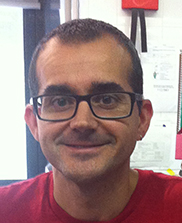Molecular and Cellular Basis of Regeneration and Tissue Repair
A special issue of International Journal of Molecular Sciences (ISSN 1422-0067). This special issue belongs to the section "Molecular Pathology, Diagnostics, and Therapeutics".
Deadline for manuscript submissions: closed (31 July 2015) | Viewed by 151999
Special Issue Editor
Special Issue Information
Dear Colleagues,
We are all fascinated by the high regenerative capabilities displayed by many animals in natural conditions. In recent years, the application of modern tools is helping us understand at the molecular and cellular levels how amphibians regenerate their limbs, how zebrafish regenerate their heart, and how Hydra and freshwater planarians regrow a new animal from a tiny piece of their bodies, among many others. In addition, new models for regeneration are emerging, which allow comparative studies to better characterize the conserved and specific strategies used for key events during regeneration, such as wound healing, polarity re-establishment, growth and patterning, and the origin of the regenerative cells.
Basic research on animal regeneration will definitively contribute to the regenerative medicine field as more bridges are established between those models capable of regenerating and those species, including humans, in which regeneration is very limited.
We invite you to contribute original articles that describe the molecular and cellular bases of regeneration and tissue repair in as many models and contexts as possible. Review articles describing our current knowledge on any aspect of regeneration and tissue repair are also welcome.
We are looking forward to receiving your contribution.
Prof. Dr. Francesc Cebrià
Guest Editor

Manuscript Submission Information
Manuscripts should be submitted online at www.mdpi.com by registering and logging in to this website. Once you are registered, click here to go to the submission form. Manuscripts can be submitted until the deadline. All submissions that pass pre-check are peer-reviewed. Accepted papers will be published continuously in the journal (as soon as accepted) and will be listed together on the special issue website. Research articles, review articles as well as short communications are invited. For planned papers, a title and short abstract (about 100 words) can be sent to the Editorial Office for announcement on this website.
Submitted manuscripts should not have been published previously, nor be under consideration for publication elsewhere (except conference proceedings papers). All manuscripts are thoroughly refereed through a single-blind peer-review process. A guide for authors and other relevant information for submission of manuscripts is available on the Instructions for Authors page. International Journal of Molecular Sciences is an international peer-reviewed open access semimonthly journal published by MDPI.
Please visit the Instructions for Authors page before submitting a manuscript. There is an Article Processing Charge (APC) for publication in this open access journal. For details about the APC please see here. Submitted papers should be well formatted and use good English. Authors may use MDPI's English editing service prior to publication or during author revisions.
Keywords
- regeneration
- tissue repair
- regenerative medicine
- wound healing
- regenerative cells
- dedifferentiation
- stem cells
Benefits of Publishing in a Special Issue
- Ease of navigation: Grouping papers by topic helps scholars navigate broad scope journals more efficiently.
- Greater discoverability: Special Issues support the reach and impact of scientific research. Articles in Special Issues are more discoverable and cited more frequently.
- Expansion of research network: Special Issues facilitate connections among authors, fostering scientific collaborations.
- External promotion: Articles in Special Issues are often promoted through the journal's social media, increasing their visibility.
- e-Book format: Special Issues with more than 10 articles can be published as dedicated e-books, ensuring wide and rapid dissemination.
Further information on MDPI's Special Issue polices can be found here.






